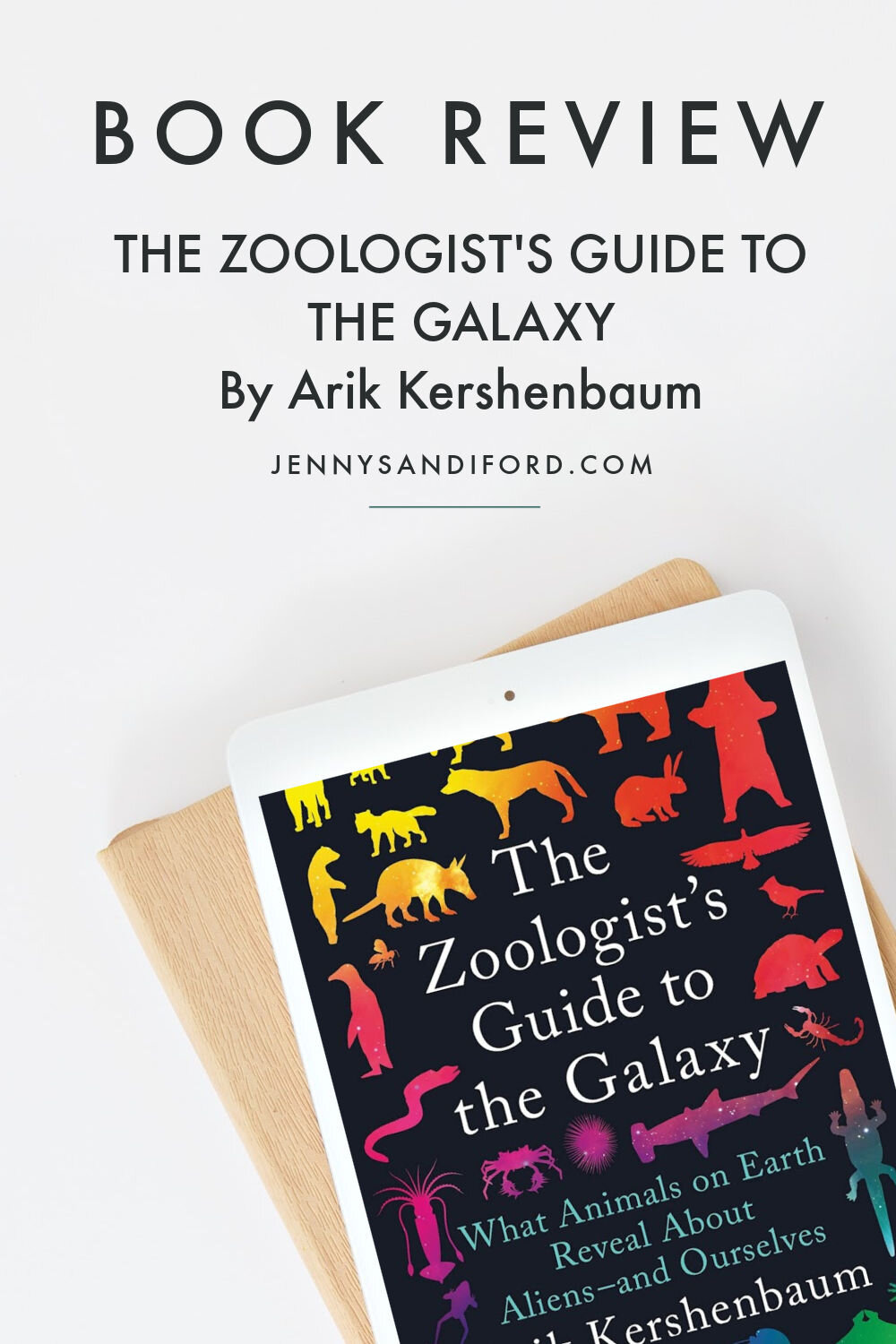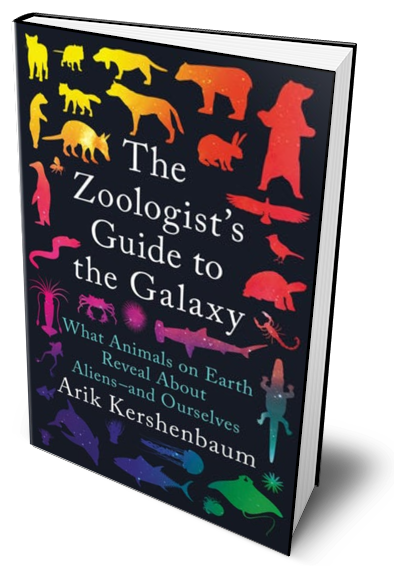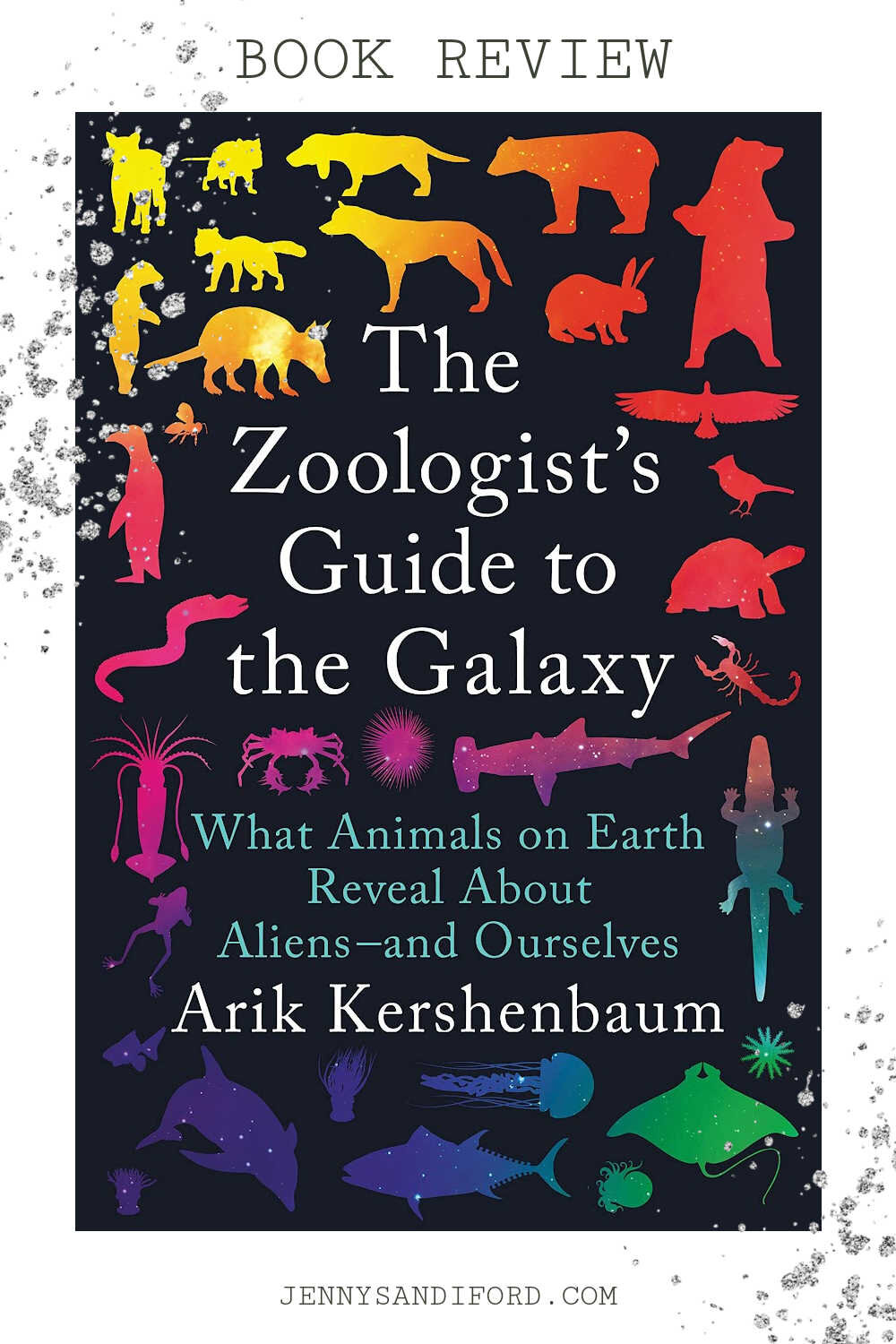The Zoologist's Guide to the Galaxy | By Arik Kershenbaum | Book Review
*This post contains affiliate links to products I recommend. If you make a purchase through these links I will receive a small commission at no cost to you.
Title- The Zoologist’s Guide to the Galaxy : What Animals on Earth Reveal About Aliens— and Ourselves
Author- Arik Kershenbaum
Publisher- Penguin Press
Genre- Non-Fiction/ Science- Biology/ Exobiology / Space
Links- Amazon | Book Depository | Goodreads
My Rating- ★★★★★
DISCOVER HOW LIFE REALLY WORKS - ON EARTH AND IN SPACE
*Thank you to Netgalley, Arik Kershenbaum, and Penguin Press for providing me with an e-ARC copy of this book in exchange for an honest review.
Contents
Book Blurb
My Review
About the Author
Book Blurb
We are unprepared for the greatest discovery of modern science. Scientists are confident that there is alien life across the universe yet we have not moved beyond our perception of 'aliens' as Hollywood stereotypes. The time has come to abandon our fixation on alien monsters and place our expectations on solid scientific footing.
Using his own expert understanding of life on Earth and Darwin's theory of evolution - which applies throughout the universe - Cambridge zoologist Dr Arik Kershenbaum explains what alien life must be like: how these creatures will move, socialise and communicate.
For example, by observing fishes whose electrical pulses indicate social status, we can see that other planets might allow for communication by electricity. As there was evolutionary pressure to wriggle along a sea floor, Earthling animals tend to have left/right symmetry; on planets where creatures evolved mid-air or in soupy tar they might be lacking any symmetry at all.
Might there be an alien planet with supersonic animals? Will they scream with fear, act honestly, or have technology? Is the universe swarming with robots? Dr Kershenbaum uses cutting-edge science to paint an entertaining and compelling picture of extra-terrestrial life.
The Zoologist's Guide to the Galaxy is the story of how life really works, on Earth and in space.
“My bold claim that we can apply lessons from studying life on Earth to life elsewhere in the universe comes from a simple observation: evolution seems to work similarly in similar environments. Both birds and bats fly, yet the common ancestor of the birds and the bats lived 320 million years ago, long before the dinosaurs, when reptiles were just beginning to take over the world. They certainly didn’t fly, because the descendants of that reptile ancestor include not just birds and bats but all snakes and turtles, dinosaurs and mammals, from elephants to humans. Clearly, the ability to fly evolved separately in birds and bats at some later stage.”
My Review
The Zoologist’s Guide to the Galaxy is a must-read for science fiction writers and anyone interested in exobiology. This book delves into the evolution of animals on earth to make educated assumptions about how alien life could evolve on exoplanets under different environmental conditions and in different behavioural situations.
This book is right up my ally as I am a huge sci-fi fan, a science fiction writer, and I have a science degree in biology. Evolution and animal behaviour are two of my favourite topics in biology, and I love how this book uses real science as a basis for discussing realistic physiological and behavioural adaptations in aliens.
Though a lot of it wasn’t new to me, I still found it enjoyable to read. I think both scientists and people with no scientific background will enjoy this book as the author has a clear way of explaining that is easy to read and keeps you interested. He uses lots of great examples from animals on earth and applies this to what we might expect in encountering aliens.
This makes you think about the reasons behind adaptations and why an alien might have blue skin or an exoskeleton, not just because they look cool, but because of the environment they live in. It also covers a lot about communication and society in animals and potential aliens. This book is mostly about zoology of animals on earth, so don’t expect it all to be about aliens. But it’s all relevant info and really interesting.
“This book is about how we can use that realistic scientific approach to draw conclusions, with some confidence, about alien life –and intelligent alien life in particular. Short of aliens landing in New York, how can we know what they’re really like? Do we need to rely on the imagination of Hollywood, and of science fiction writers? Or perhaps alien animals are likely to be no more bizarre than a kangaroo hopping on giant feet, or a squid jet-propelling itself through the sea, with skin that flashes in rainbow colours. Trusting in the universal laws of biology that bind us –all life on Earth –and also those creatures on alien planets, we will see that the reasons for those adaptations that animals have adopted on Earth are likely to be reasons for adaptations on other planets as well.
”
Here is the list of contents to give you an idea about the topics covered
Form vs Function: What is Common Across Worlds?
What are Animals and What are Aliens?
Movement – Scuttling and Gliding Across Space
Communication Channels
Intelligence (Whatever That Is)
Sociality – Cooperation, Competition and Teatime
Information – A Very Ancient Commodity
Language – The Unique Skill
Artificial Intelligence – A Universe Full of Bots?
Humanity, As We Know It
Summary
I highly recommend this book for anyone interested in life on other planets and wants a more scientific approach.
For science fiction writers, this will give you a deeper understanding of animal/ alien behaviour to help you write believable aliens that fit in with the worlds you create.
For budding exobiologists and alien enthusiasts, this will give you a lot to think about in terms of alien life that could be out there in the universe and what we might expect to find one day. This is a great book to add to your shelf!
About the Author- Dr Arik Kershenbaum
Dr Arik Kershenbaum is a zoologist, College Lecturer, and Fellow at Girton College, University of Cambridge. He has researched animal vocal communication for the past ten years in Europe, Israel and the United States and has published more than twenty academic publications on the topic. He is also a member of the international board of advisors for METI.org, a think tank on the topic of Messaging Extra Terrestrial Intelligence. Arik has done extensive field work on animal communication, following wolves around Yellowstone National Park and the forests of central Wisconsin to uncover the meaning of their different kinds of howls, as well as decoding the whistles of dolphins among the coral reefs of the Red Sea, and the songs of hyraxes in the Galilee
About the reviewer- Jenny sandiford
Hi I’m Jenny. I am passionate about promoting new authors and sharing any amazing books I find with the world. I am a book blogger, bookstagrammer, YA fantasy writer and travel writer.
I’m also a lover of nature, hiking, Harry Potter, cats, fantasy lands and quiet places.
Pin this review to pinterest
*This post is part of a monthly linkup organised by Lovely Audiobooks. Click here to check it out and join in!
Leave me a comment below, I’d love to hear from you! Have you read this book? What did you think?






























